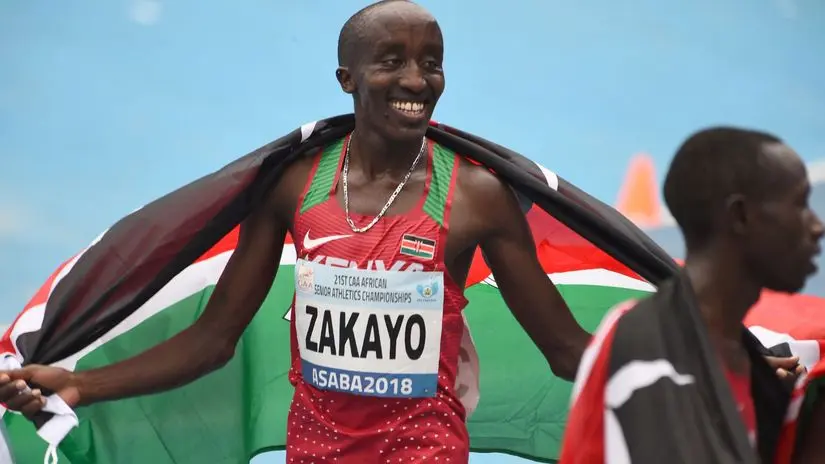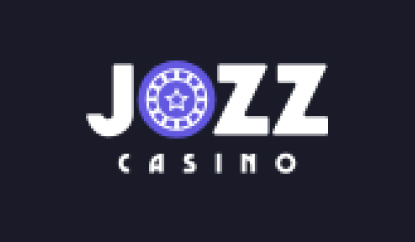The Edward Zakayo Doping Case has ignited a raw and complex conversation in Kenyan athletics, bringing together the rigidity of anti-doping rules and the fragile realities of an athlete’s life. In the span of a few days, a national agency, a tribunal, and a former world champion found themselves at the center of a storm, one side insisting on due process, the other pleading that a simple human mistake set off a chain that broke a career.
| CASINO | BONUS | INFO | RATING | |
|---|---|---|---|---|
|
bonus
175% welcome package for new players!
See 4 Bonuses
|
info
Lots of interesting bonuses, players from many countries, long history No. 1668/JAZ |
|||
|
bonus
New players get 50 free spins and a Ksh 2500 freebet!
See 7 Bonuses
|
info
BK 0000665 PG 0000405 Good combination of online casino and betting platform |
|||
|
bonus
100% match bonus up to $500 for new users!
See 6 Bonuses
|
info
Lots of bonuses, 3,000+ games, instant-play & fast payouts No.1668 / JAZ |
|||
|
bonus
Win Ksh 30,000 daily in Aviator tournament!
See 7 Bonuses
|
info
20+ software providers, Aviator+ other crash games, BK 0000671 PG 0000428 |
What ADAK says happened
The Anti-Doping Agency of Kenya, known as ADAK, issued a detailed statement on October 6 and rejected Edward Zakayo’s claims of mishandling. Signed by acting CEO Peninah Wahome, the response described his public post titled Why I Left Athletics as misleading and inaccurate, and emphasized that every step of the case complied with the Anti-Doping Act, ADAK Anti-Doping Rules, the World Anti-Doping Code, and the International Standards for Results Management. ADAK framed the matter as a textbook application of rules that are designed to be clear, consistent, and verifiable.
Central to ADAK’s position is the doctrine of strict liability, the long-standing principle that puts the onus on athletes to keep their whereabouts accurate for out-of-competition testing. In the agency’s view, explanations can be heard and weighed, but they do not shift responsibility that the code squarely places on competitors.
Maintaining accurate whereabouts remains the athlete’s responsibility under the strict-liability framework.
ADAK also addressed process concerns. It said that athletes are notified formally, provisionally suspended according to procedure, and given opportunities to respond and be heard. It stressed that it does not collaborate with Athletics Kenya or athlete managers in disciplinary matters, asserting independence guided by scientific evidence and accredited laboratory results.
The SDT ruling and the timeline
The Sports Disputes Tribunal, often referred to as the SDT, heard and determined Zakayo’s case on May 8, 2025. The written decision confirmed two missed tests on February 3 and April 3, 2024, and one filing failure in the first quarter of 2024. The tribunal noted that Zakayo had explained he lost his phone after a race in Spain in November 2023, which limited his access to ADAMS, the system where athletes update whereabouts, but the panel concluded that the explanation did not negate the failures.
ADAK underscored that the SDT operates independently and that the athlete had the right to select legal representation. For those without resources, the tribunal facilitates access to independent pro bono counsel. The agency also pointed to the acceptance of virtual online hearings as a standard practice that helps athletes who live outside Nairobi. The SDT decision came with a right to appeal before the Court of Arbitration for Sport in Switzerland, a reminder that the process includes a higher judicial path for review.
Zakayo’s account in his own words
It is impossible to read Edward Zakayo’s account and not feel the weight of what he says he has endured. The 2018 World U20 5,000m champion insists he has never doped and that what unraveled his career was a lost phone and a system that showed him no grace. In his telling, everything that followed compounded his hardship.
My only mistake was losing my phone, a mistake any human being can make. But because I am poor and have no one powerful behind me, they destroyed me.
He says he traveled to Nairobi several times with no money to plead his case, each trip a blow to his dignity. He describes pressure and fear at home, and claims that strangers sometimes in government vehicles came to his residence, an experience he viewed as intimidation. In another searing line, he wrote of officials who smile in public yet hurt athletes in private, the kind of accusation that paints a distressing picture of mistrust.
Athletics is sweet, full of opportunities. But behind it, there are snakes, officials who eat from our sweat, who smile at us in public but stab us in secret.
He also asserted that a lawyer was imposed on him and that hearings were conducted via Zoom. On these points, ADAK responded that athletes are informed of their right to legal representation of their own choosing and that virtual hearings are internationally accepted and used to ensure accessibility and timeliness. For Zakayo, the end result was not simply a sanction, it was a personal crisis that spilled into family life, a struggle to support his pregnant wife and siblings, and finally a farewell to the career he once loved.
The two-year ban and the principle at stake
Zakayo’s sanction was a two-year ban for a combination of two missed tests and one filing failure, the exact scenario that anti-doping rules classify as a whereabouts violation. The facts as confirmed by the SDT fit into a framework designed to catch deliberate evasion, but the same framework also captures administrative lapses. This is the tightrope that anti-doping regulators and athletes walk, a tightrope where clarity protects clean sport, yet inflexibility can feel punishing when life intervenes.
Strict liability is the anchor of results management. Athletes must maintain current locations for a one-hour daily testing window, update changes promptly in ADAMS, and remain available to sample collection staff. A lost phone, as Zakayo said, can be a disruptive event. In the eyes of the rules however, contingencies like alternative access, backups, or timely alerts are part of an athlete’s professional duty to stay compliant.
Harassment claims and ADAK’s firm denial
Among the most troubling parts of Zakayo’s story are the intimidation claims. ADAK addressed those head on, calling them inaccurate and urging athletes to report any person who claims to act on the agency’s behalf outside of formal channels. The agency said that all interactions with athletes are official, documented, and conducted under the law, and that it does not send unauthorized visitors to athletes’ homes.
ADAK denies any form of harassment, intimidation, or unauthorised visits to any athlete’s home or premises. All interactions with athletes are official, documented, and guided by the Anti-Doping Act, the ADAK Anti-Doping Rules, the World Anti-Doping Code, and international standards.
The agency further distanced itself from Athletics Kenya, athlete management agencies, and commercial sponsors, stating that its work is independent and guided by verified laboratory results. This independence is presented as a safeguard for the integrity of cases that carry significant consequences for careers and reputations.
Process, rights, and the path to appeal
ADAK outlined the standard arc of a case, from formal notice to provisional suspension, to the athlete’s written response, and on to a hearing at the SDT. The tribunal issued a reasoned written decision with a right to appeal to CAS. These guardrails are meant to ensure that athletes who contest findings have a clear process and a neutral venue to challenge outcomes.
ADAK also highlighted that virtual proceedings are a legitimate way to keep cases moving efficiently. For a country with athletes training far from the capital, this format can be practical. It places a premium on reliable connectivity and preparation, yet it removes travel as a barrier to being heard.
The human cost behind the headlines
Beneath the documents and rulebooks is a young man who once symbolized Kenya’s future on the track. Zakayo says the case forced him to step away from the sport, and he portrays that decision not as defeat but as a final act of self-preservation. The image of a former world junior champion recounting humiliating trips to seek help is not easy to shake.
In a detail that speaks volumes about life after elite sport, he is now working as a tour guide in the Maasai Mara. He says he leaves athletics with his integrity intact, a line that underscores the gap between the athlete’s sense of self and the impersonal logic of compliance systems. ADAK, for its part, acknowledges the reality of emotional distress, while maintaining that emotional distress cannot replace the requirement for adherence to testing procedures and due process.
What this means for Kenyan athletics
The Edward Zakayo story brings two imperatives into sharp relief. Clean sport demands clear standards and consistent enforcement. Athlete welfare demands empathy for real-world setbacks and a safety net of education and communication that prevents small errors from becoming career-ending crises.
ADAK’s message is that Kenya’s system is grounded in law and international norms, and that public confidence depends on resisting unverified claims. Zakayo’s message is that the system can feel cold and unforgiving, especially for athletes without resources or powerful backing. Both truths can exist at once, and navigating that tension is the task that lies ahead for institutions and athletes alike.
Key takeaways for athletes
- Keep ADAMS access resilient, secure logins, designate backups, and update whereabouts quickly,
- Know your rights and timelines, seek independent counsel early, and understand the SDT and CAS pathways,
- Report any irregular contact immediately through official channels and document every interaction.
Voices on both sides
The case has been framed in firm terms by ADAK, which warned media and the public to avoid spreading unverified claims that could undermine confidence in Kenya’s anti-doping system. The agency stresses independence from Athletics Kenya and athlete managers, and it asserts that all Anti-Doping Rule Violation cases are handled with integrity and in line with international standards.
From Zakayo’s perspective, he never took banned substances, and what happened to him was the escalation of a single mistake into a professional collapse. He speaks of poverty and power imbalances, of humiliation and fear. These are not technicalities, they are the contours of a human story that unfolds far from the cheers of a packed stadium.
Where the story goes from here
The SDT decision provided a right of appeal to the Court of Arbitration for Sport in Switzerland. That path remains the formal way to test the findings of the tribunal. ADAK’s stance is that due process has been followed and that the two-year sanction reflects the rules as written. For Zakayo, who publicly stated that he has left the sport, closure may not come from a legal brief but from rebuilding a life beyond the track.
Still, the larger conversation in Kenyan athletics continues. Trust in systems and compassion for athletes are not opposing forces. They are pillars that must stand together for the sport to thrive. The clarity of rules is essential, yet so is an ecosystem that helps athletes anticipate pitfalls and navigate them before a missed test becomes a verdict. That is the balance worth striving for as the echoes of this case fade and the next generation laces up for its chance.
Final word
The Edward Zakayo case is a mirror held up to a sport that asks for precision from its runners and its regulators. ADAK says the rules were applied correctly. Zakayo says a human error cost him everything. Between those positions lies the daily work of safeguarding both clean competition and the dignity of the people who chase dreams on the track.










